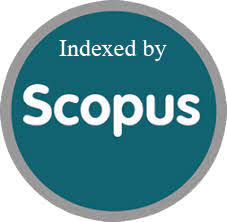Comparison of early surgical outcomes following anoplasty and limited PSARP for perineal fistula
DOI:
https://doi.org/10.52783/jns.v9.521Keywords:
Imperforate anus, Anorectal malformation, Perineal fistula, ColostomyAbstract
Background: To present the early surgical outcomes of two different surgical methods for the treatment of perineal fistula in patients with anorectal malformation.
Material and Methods: Retrospective chart analysis of patients treated with any of the two surgical approaches for perineal fistula treatment during the newborn period, without a colostomy at Academic and Community Pediatric Surgery Reference Hospital during October 1st, 2015 to December 31st, 2018.
Results: Twenty-six out of 57 patients of our database met inclusion criteria during the study period. 15 in the anoplasty group and 11 in the Minimal Posterior Sagittal Anorectoplasty (MPSARP); the anoplasty group had more rate of anoplasty dehiscence (4 partial, 6 total – requiring additional stitches, p = 0.027), versus zero in the MPSARP group, albeit there was 1 superficial perineal dehiscence. All surgeries were performed without a previous colostomy. There were no other surgical complications reported, and there was no difference in age, weight, sacral ratio, and associated malformations.
Conclusion: Minimal PSARP can be safely done in the newborn patient with a patent perineal fistula.
Downloads
Metrics
References
Chen CJ. The treatment of imperforate anus: experience with 108 patients. J Pediatr Surg. 1999; 34:1728-32.
Julia V, Tarrado X, Prat J, Saura L, Montaner A, Castanon M, et al. Fifteen years of experience in the treatment of anorectal malformations. Ped Surgery Int. 2010; 26:145-9.
Martinez-Quiroz R, Montoya-Reales D, Rodas-Andino J. Malformaciones Anorrectales: Diagnóstico y tratamiento. Cinco años de experiencia, Honduras. Revista medica hondurena. 2016; 84:36-40.
Endo M, Hayashi A, Ishihara M, Maie M, Nagasaki A, Nishi T, et al. Analysis of 1,992 patients with anorectal malformations over the past two decades in Japan. Steering Committee of Japanese Study Group of Anorectal Anomalies. J Pediatr Surg. 1999; 34:435-41.
Peña A, Bischoff A. Surgical treatment of colorectal problems in children. 1 ed. Peña A, Bischoff A, editors: Springer International Publishing; 2015.
Browne D. Some Congenital Deformities of the Rectum, Anus, Vagina and Urethra: Hunterian Lecture delivered at the Royal College of Surgeons of England on 9th February, 1950. Ann Royal Coll Surg Eng. 1951; 8:173-92.
Hendren WH. Constipation caused by anterior location of the anus and its surgical correction. J Pediatr Surg. 1978; 13:505-12.
Matthews DC, Glader B. Erythrocyte disorders in infancy. In: Gleason CA, Devaskar DU, editors. Avery's Diseases of the Newborn. 9th ed. Philadelphia, PA: Elsevier Saunders; 2012. p. 1498.
Peña A. Atlas of surgical management of anorectal malformations: Springer-Verlag, New York Inc.; 1990 1990. 104 p.
Pakarinen M, Goyal A, Koivusalo A, Baillie C, Turnock R, Rintala R. Functional outcome in correction of perineal fistula in boys with anoplasty versus posterior sagittal anorectoplasty. Pediatric Surgery Int. 2006; 22:961-5.
Amanollahi O, Ketabchian S. One-stage vs. three-stage repair in anorectal malformation with rectovestibular fistula. Afr J Paediatr Surg. 2016; 13:20-5.
Kumar B, Kandpal DK, Sharma SB, Agrawal LD, Jhamariya VN. Single-stage repair of vestibular and perineal fistulae without colostomy. J Pediatr Surg. 2008; 43:1848-52.
Walton M, Bass J, Soucy P. Tethered cord with anorectal malformation, sacral anomalies and presacral masses: an under-recognized association. Eur J Pediatr Surg. 1995; 5:59-62.
Otagiri N, Matsumoto Y, Yoshida Y. Posterior sagittal approach for Currarino syndrome with anterior sacral meningocele: a case report. J Pediatr Surg. 2000; 35:1112-4.
Bischoff A, Levitt M, Peña A. Update on the management of anorectal malformations. Pediatr Surg Int. 2013; 29:899-904.

Published
Versions
- 2020-07-27 (2)
- 2020-07-21 (1)
How to Cite
Issue
Section
License
Copyright (c) 2020 Bruno Martinez-Leo, Vicente Herrera-Del Prado, Victor Portugal-Moreno, Arturo Godoy-Esquivel, Adriana Castillo-Aguirre, Luis Velasco-Soria, Luis Garcia-Cabello, Miguel Vargas-Gomez

This work is licensed under a Creative Commons Attribution 4.0 International License.
You are free to:
- Share — copy and redistribute the material in any medium or format
- Adapt — remix, transform, and build upon the material for any purpose, even commercially.
Terms:
- Attribution — You must give appropriate credit, provide a link to the license, and indicate if changes were made. You may do so in any reasonable manner, but not in any way that suggests the licensor endorses you or your use.
- No additional restrictions — You may not apply legal terms or technological measures that legally restrict others from doing anything the license permits.










